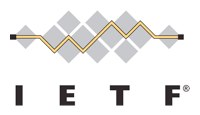July 21, 2014 archive
Jul 21
Live Today: IXPs and the Relationship Between Geography and Network Topology (Featured Blog)
Jul 21
Deploy360@IETF90, Day1: v6OPS, DNSSEC in SIPCORE, 6TISCH and the Technical Plenary
 Today here in Toronto at IETF 90 the main activity for the Deploy360 team will be the “IPv6 Operations” (V6OPS) session happening at 9:00am EDT this morning. The V6OPS agenda shows that today there will be three larger discussions of interest to us:
Today here in Toronto at IETF 90 the main activity for the Deploy360 team will be the “IPv6 Operations” (V6OPS) session happening at 9:00am EDT this morning. The V6OPS agenda shows that today there will be three larger discussions of interest to us:
- A discussion of how the interaction between SLAAC and DHCPv6 for can be improved for the configuration of IPv6 clients. There is an Internet Draft that explains the problem statement and will be the basis for the discussion.
- An analysis of problems encountered in a mobile environment when IPv6-enabled devices roam between mobile networks. Again, an Internet Draft provides the analysis. Coming out of the work of a number of mobile service providers this should be an interesting session.
- A discussion about what is the appropriate usage of Unique Local Addresses (ULAs). A draft will be presented but there will also be a much larger discussion happening around what the role of ULAs will be.
There are also a few other topics on the V6OPS agenda and overall it should be a busy session.
If you’d like to join the V6OPS session (or any of the others) remotely to hear the discussion you can follow the instructions on the IETF 90 Remote Participation page or use the “tools-style” agenda page that provides easy links to the audio stream, jabber chat room documents and more for each of the sessions.
After that I’ll be over in the SIPCORE session in the afternoon for Olle Johansson’s draft about how DANE can be used to improve the security of VOIP sessions using TLS and SIP. As I said in my Rough Guide post about DNSSEC/DANE at IETF 90, Olle’s draft presents an interesting usage of DANE in the world of SIP-based voice-over-IP (VoIP).
Next I’ll be over listening in the 6TISCH working group. This is not one I’ve been actively monitoring but it is of interest to me because it is looking at how IPv6 gets used in automated environments and in Low-power and Lossy Networks (LLNs) that many of us may broadly group into the “Internet of Things”. From the 6TISCH charter:
The IEEE802.15.4e Timeslotted Channel Hopping (TSCH) is a recent amendment to the Medium Access Control (MAC) portion of the IEEE802.15.4 standard. TSCH is the emerging standard for industrial automation and process control LLNs, with a direct inheritance from WirelessHART and ISA100.11a. Defining IPv6 over TSCH, 6TiSCH is a key to enable the further adoption of IPv6 in industrial standards and the convergence of Operational Technology (OT) with Information Technology (IT).
Finally, our formal schedule will end today with what should be a very interesting Technical Plenary looking at the link between “network topology” and geography. The Technical Plenary will be streamed live at http://www.ietf.org/live/ starting at 5:10pm EDT and is available for all to watch. Here is the description of the main technical focus:
Since network gear, links, and the nodes they connect must be in some specific physical place, there is always a relationship between geography and network topology. The flow of data through that topology has generally, however, been relatively independent of the geography.
Recently, some public policy proposals have tried to tie the flow of data on the network to national or regional boundaries. This panel will discuss the relationship between geography and network topology from three points of view.
- Antonio Gamba-Bari from the IXmaps project at the University of Toronto attempts to analyse traffic to understand where it is going with, so far, a particularly Canadian focus.
- The Internet Society’s Jane Coffin will discuss ISOC’s worldwide Internet Exchange efforts with particular emphasis on underserved regions.
- Amogh Dhamdhere of CAIDA will discuss their analysis of Internet traffic, including its relationship to geography.
Each panelist will make a brief presentation, and then we will discuss the implications of their findings. A Question & Answer session will follow the presentations.
I’m personally fascinated by this topic so I’ll be looking forward to this plenary session! Again it is at http://www.ietf.org/live/ – please feel free to share that link widely.
The information about the relevant working groups today is:
V6OPS (IPv6 Operations) WG
Agenda: https://datatracker.ietf.org/meeting/90/agenda/v6ops/
Documents: https://datatracker.ietf.org/wg/v6ops/
Charter: https://datatracker.ietf.org/wg/v6ops/charter/
(Monday, July 21, 2014, 0900-1130 EDT, Canadian room)
SIPCORE (Session Initiation Protocol Core) WG
Agenda: https://datatracker.ietf.org/meeting/90/agenda/sipcore/
Documents: https://datatracker.ietf.org/wg/sipcore/
Charter: http://tools.ietf.org/wg/uta/charters/
(Monday, July 21, 2014, 1300-1500 EDT, Territories room)
6TISCH (IPv6 over TSCH mode of 802.16e4)
Agenda: https://datatracker.ietf.org/meeting/90/agenda/6tisch/
Documents: https://datatracker.ietf.org/wg/6tisch/
Charter: https://datatracker.ietf.org/doc/charter-ietf-6tisch/
(Monday, July 21, 2014, 1520-1650 EDT, Territories room)
For more background on what is happening at IETF 90, please see our “Rough Guide to IETF 90″ posts on the ITM blog:
- Rough Guide to IETF 90: DNSSEC, DANE and DNS Security (see also our Deploy360 post on the topic)
- Rough Guide To IETF 90: IPv6 Is Everywhere, eh?
- ISOC Rough Guide to IETF 90: Routing Resilience
- Overview: ISOC Rough Guide to IETF 90: Toronto, Eh?
If you are here at IETF 90 in Toronto, please do feel free to say hello to a member of the Deploy360 team. And if you want to get started with IPv6, DNSSEC or one of our other topics, please visit our “Start Here” page to find resources appropriate to your type of organization.
Jul 21

